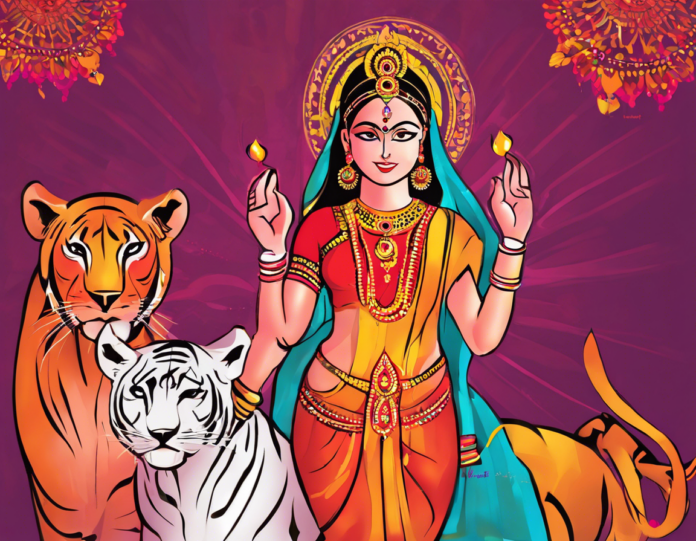As Navratri 2024 approaches in April, devotees of Hinduism eagerly await the nine-day festival filled with spiritual significance, traditions, and festivities. Navratri, which means ‘nine nights’ in Sanskrit, is observed twice a year – Chaitra Navratri, which falls in March-April, and Sharad Navratri, which occurs in September-October. The upcoming Chaitra Navratri, scheduled to begin on Tuesday, 2nd April 2024, marks the beginning of the Hindu lunar calendar.
Significance of Navratri:
Chaitra Navratri is particularly significant as it symbolizes the change of seasons from winter to spring. It is believed that during these nine days, the Goddess Durga, in her various forms such as Shailaputri, Brahmacharini, Chandraghanta, Kushmanda, Skandamata, Katyayani, Kalaratri, Mahagauri, and Siddhidatri, is worshipped with great reverence. Each form of the Goddess signifies different virtues and powers.
Rituals and Traditions:
-
Ghatasthapana: The first day of Navratri involves the installation of a pot (ghata), symbolizing the presence of the Goddess.
-
Puja and Fasting: Devotees observe fasts during Navratri and offer prayers to the Goddess in the mornings and evenings. Puja is performed with flowers, incense sticks, and lamps.
-
Kanya Pujan: On the eighth or ninth day, young girls symbolizing the Goddess are worshipped and offered food and gifts.
-
Garba and Dandiya Raas: The festival is incomplete without the vibrant and energetic Garba and Dandiya Raas dance performances, where people come together to celebrate and enjoy.
Navratri Special Foods:
During Navratri, devotees follow a strict vegetarian diet and avoid onion and garlic. Some popular foods consumed during the festival include:
- Singhare ke atte ka puri: Deep-fried bread made of water chestnut flour.
- Sabudana khichdi: Tapioca pearls cooked with potatoes and peanuts.
- Kuttu ki pakodi: Buckwheat fritters.
- Fruits and dairy products: Fresh fruits and milk-based sweets are also commonly consumed.
Navratri in Different Regions:
Each region in India celebrates Navratri uniquely:
- In Gujarat, people perform the energetic Garba and Dandiya Raas.
- In West Bengal, Goddess Durga is worshipped with elaborate rituals during Durga Puja.
- In North India, Kanjak is celebrated on the eighth or ninth day, where young girls are worshipped.
- In Maharashtra, people celebrate Gudi Padwa along with Navratri.
Navratri: A Time for Spiritual Renewal and Celebration
Navratri provides an opportunity for spiritual introspection, renewal, and seeking the blessings of the divine feminine energy. The festival promotes unity, harmony, and the triumph of good over evil. Devotees immerse themselves in prayer, meditation, and celebrations to seek the blessings of Goddess Durga for strength, prosperity, and well-being.
FAQs:
- Why is Navratri celebrated for nine days?
-
Navratri is observed for nine days to honor the nine different forms of Goddess Durga.
-
Is it mandatory to fast during Navratri?
-
Fasting during Navratri is a personal choice and not mandatory, but it is a common practice to purify the mind and body.
-
What is the significance of Garba and Dandiya Raas?
-
Garba and Dandiya Raas are traditional folk dances performed during Navratri to celebrate the victory of good over evil.
-
Can non-Hindus participate in Navratri celebrations?
-
Navratri welcomes people of all backgrounds to participate in the festivities and experience the cultural richness of the festival.
-
How can one prepare for Navratri puja at home?
- To prepare for Navratri puja, one can clean the house, arrange puja essentials, and create a dedicated space for worship.
Navratri is not just a festival; it is an embodiment of faith, culture, and tradition that brings people together in joy and devotion. As Navratri 2024 approaches, let us embrace the spirit of the festival with enthusiasm, reverence, and a sense of communal unity.
